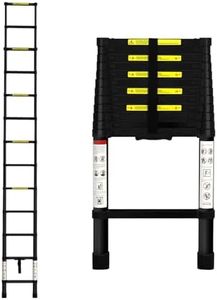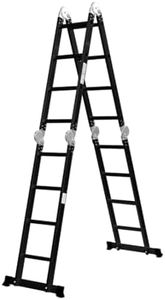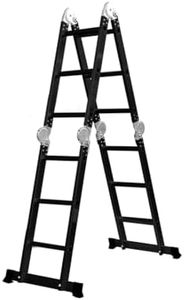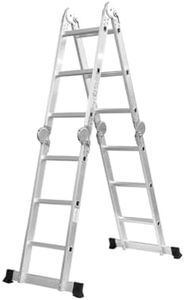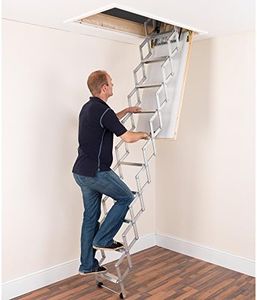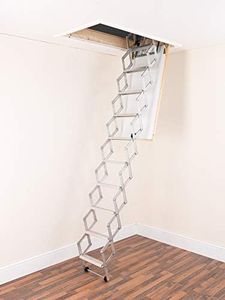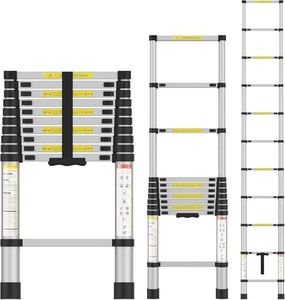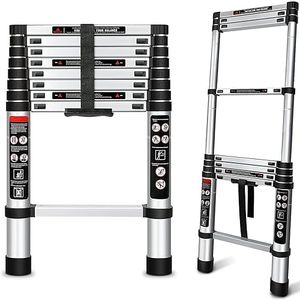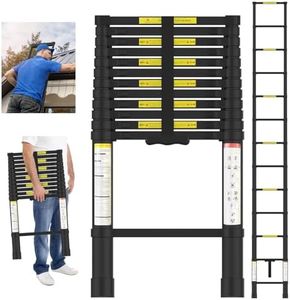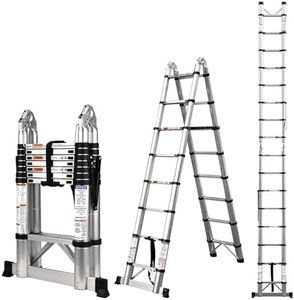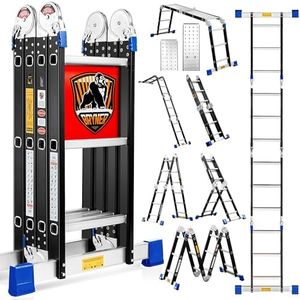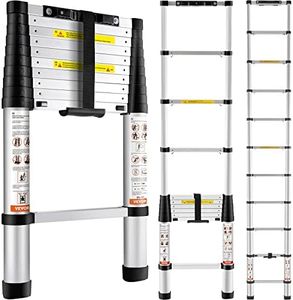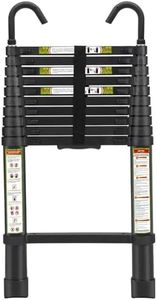We Use CookiesWe use cookies to enhance the security, performance,
functionality and for analytical and promotional activities. By continuing to browse this site you
are agreeing to our privacy policy
10 Best Loft Ladders
From leading brands and best sellers available on the web.Buying Guide for the Best Loft Ladders
Choosing a loft ladder is about balancing ease of use, sturdiness, and fit to your home. The right ladder will make accessing your loft or attic safe and comfortable, while also folding away neatly when not needed. Start by measuring the height from floor to ceiling where you’ll install the ladder, the available loft hatch opening size, and the space around the hatch for when the ladder is unfolded. Consider how often you’ll use the ladder and the amount of weight it needs to support. Understanding these basics will help you narrow down your options and make sure you select a ladder that suits your space and usage needs.MaterialLoft ladders are typically made from wood, aluminum, or steel. The material affects the ladder’s strength, weight, and longevity. Wooden ladders tend to be sturdy and visually appealing, blending well in homes with classic décor, but they are heavier. Aluminum ladders are lightweight, rust-resistant, and easy to handle, making them great for frequent use, though they might not have the same aesthetic appeal. Steel ladders are very strong and durable, suitable for heavier loads, but can be heavier and may require more maintenance to avoid corrosion. Choose the material based on how often you’ll use the ladder, the maximum weight it needs to support, and the visual style you prefer.
Maximum Load CapacityThis spec refers to the highest weight the ladder can safely support, including the user and anything they are carrying. It’s a critical safety aspect. Loft ladders typically range from handling 100kg (about 220 lbs) up to 150kg (about 330 lbs) or more. For occasional, light use, a lower capacity may suffice, but if you plan to carry boxes or heavy items, or if multiple people will use the ladder, opt for a higher capacity to ensure safety.
Ladder TypeThe main types are folding, sliding, telescopic, and concertina. Folding ladders are usually made of wood and fold in sections. Sliding ladders are often aluminum and slide in parts, staying attached to the hatch. Telescopic ladders collapse inward for compact storage, ideal for tight spaces. Concertina ladders unfold like an accordion and can fit in very restricted openings. The right type depends on your available loft hatch size, ceiling height, and how much clearance you have in front of the hatch when the ladder is extended. If space is limited, telescopic or concertina ladders are worth considering; for more spacious and frequent use, folding or sliding types are often preferred.
Hatch Compatibility and Ladder LengthNot all ladders fit every loft opening and ceiling height. The ladder length should match your floor-to-ceiling measurement, while the hatch compatibility refers to the size of the opening where the ladder will be installed. Ladders specify minimum hatch opening sizes. Measure your hatch and ceiling height before shopping, and ensure the ladder you select both fits the opening and reaches the floor without being too steep or too shallow, which affects comfort and safety.
Steps and Comfort FeaturesSome ladders have wider steps or anti-slip surfaces, handrails, or padding for increased comfort and safety. Wider, deeper steps make climbing easier and are recommended if those using the ladder are elderly, children, or if the ladder will be used often. Handrails add security, especially for younger or older users. Look out for these features if comfort and safety are priorities for your household.
Ease of Installation and OperationLoft ladders vary in how easy they are to install and use. Some ladders are designed for DIY fitting with clear instructions, while others might need professional installation. Consider how comfortable you are with home improvement tasks. Operation refers to how easy it is to pull down and retract the ladder – lighter ladders and those with spring assistance are easier to manage. If you’ll need to access your loft frequently, prioritize ease of use.
